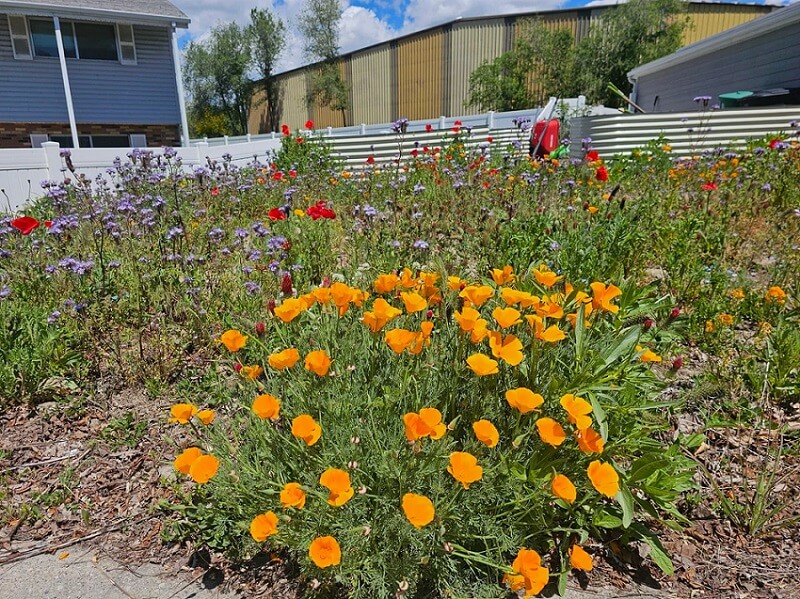Is grass soon to be a thing of the past? Sustainability-minded homeowners are ditching the green stuff and rethinking their yards in stunningly beautiful ways.
In a recent Reddit post, one user shared a photo of vibrant orange, purple, and red wildflowers growing in a side yard instead of the grass that was once there.


"I replaced my grass with a raised bed garden (nothing planted yet this season) and native wildflowers," the original poster wrote.
Followers of the r/NoLawns subreddit were full of compliments and questions about what all the wildflowers in the photo are.
The gardener's side yard transformation began two and a half years ago by removing the grass and laying down black plastic to sit until the following spring (the user seems to indicate the plastic was on the surface and kept there temporarily, but this is a good time to mention that burying landscape fabric is a bad idea and cardboard is better for both results and the environment). From there, the gardener tilled the dirt, leveled it, and laid seed.
"It didn't look great the first year, I think I missed the spring window because we only had a few flowers," the gardener wrote in the comments. "While the plastic was down, I pushed 4 raised beds and put down mulch in the garden area."
Posts like this are important because they show the world that there is more to lawns than traditional grass and that better options are available for our wallets, our time, and our planet.
For many years and in many places, green grassy yards have been the desirable landscape and landscaping expectation everyone strives for. But with widespread droughts and rising temperatures, now is the time for our societal norms to change.
"Biologically, they're monocultures, and nature likes diversity," said Daniel Douglass, associate teaching professor at Northeastern's College of Science, about grass lawns.
"When you're growing a turf lawn or a sod lawn, you are working at severely limiting the biological diversity of that space," said Stephen Schneider, chief arborist at Northeastern University's Boston campus.
Just keeping grass alive on a lawn takes up to 75% of a household's water consumption. However, a natural lawn can help you reduce your water usage by around 150,000 gallons annually.
"That's absolutely stunning," wrote one Redditor about the wildflower post.
"All the colors are awesome!" a Reddit commenter chimed in.
"Gorgeous! A pollinator's banquet!" another Redditor exclaimed.
Join our free newsletter for easy tips to save more, waste less, and help yourself while helping the planet.









